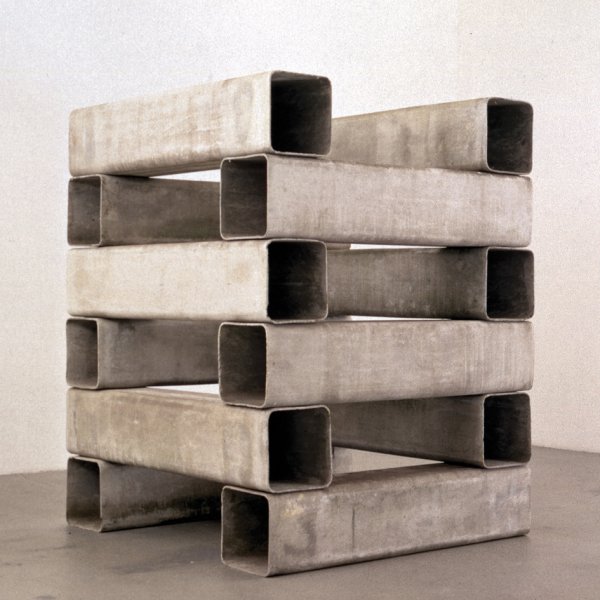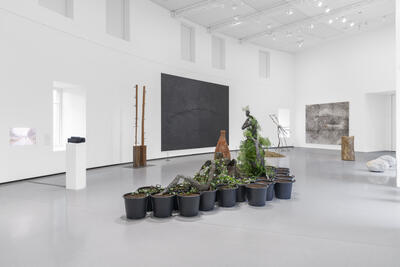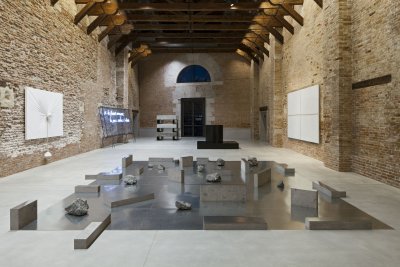Catasta
1967
12 eternit blocks
187 x 150 x 150 cm (73 5/8 x 59 1/16 x 59 1/16 in.)
Catasta is the parallelepiped assembly of twelve Eternit (fibre cement) square section bars, arranged in a perfectly regular grid pattern. A clean sculpture that combines effects of lights and shadows, the lightness of voids and the heaviness of metal, Catasta refers to Alighiero Boetti’s intention to democratise the sculpture through the use of ordinary objects.
A strict contemporary of the first creations of Arte Povera, embedding industrial materials is characteristic of the artist’s early years, as he created poor sculptures made with Eternit, iron, wood, paint and lacquers. The reflection on the aesthetics and optical seduction thus takes body in a work of volume, that has an intrinsic gestural quality.
Structure-manifesto of a major representative of Arte Povera, Alighiero Boetti’s Catasta belongs to the Pinault Collection. This sculpture was first shown at the “Prima Materia” (“Raw Material”) exhibition at the Punta della Dogana.
A strict contemporary of the first creations of Arte Povera, embedding industrial materials is characteristic of the artist’s early years, as he created poor sculptures made with Eternit, iron, wood, paint and lacquers. The reflection on the aesthetics and optical seduction thus takes body in a work of volume, that has an intrinsic gestural quality.
Structure-manifesto of a major representative of Arte Povera, Alighiero Boetti’s Catasta belongs to the Pinault Collection. This sculpture was first shown at the “Prima Materia” (“Raw Material”) exhibition at the Punta della Dogana.
Exhibitions

Alighiero e Boetti © Adagp, Paris.
© Alighiero Boetti / Artists Rights Society (ARS), New York


